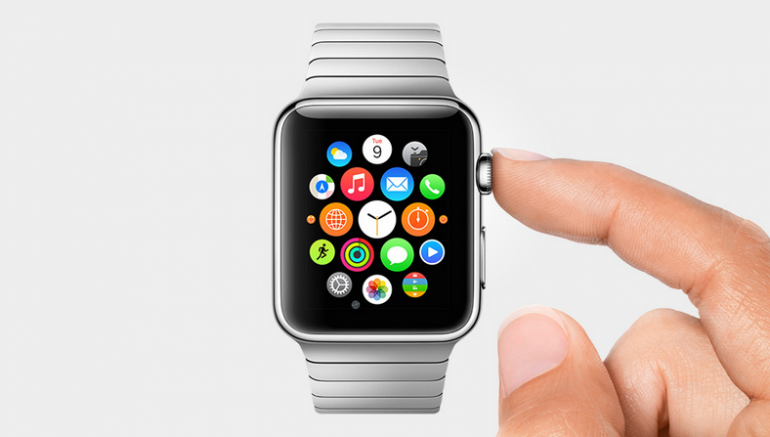After months of rumors about a wearable device from tech giant Apple, the company revealed its vision of a wrist-worn computer platform yesterday. Tim Cook introduced the Apple Watch as a device that will “redefine what people expect from its category” but can he deliver on that promise? While it is too early to give a definite answer, we have analyzed the rumors, announcements and media response to give you a hint.
Wearables are quite a new phenomenon in the mainstream and in contrast to making people curious about new technical solutions it is much harder getting them to adopt wearable technologies on an ongoing base. Apple has a great history in design and for its upcoming watch the company paid close attention to build a device with a look that fits their customer’s personal style. The case comes in two different sizes and six different color and material options. Combined with a wide range of bands made of steel, leather and rubber and its customizable watch faces, Apple Watch can be everything from elegant to sporty. These many different options and the possibility to change its look long after purchase make it a piece of jewelry that can please its owner as time moves on.
Maintenance is another factor that decides over long term customer satisfaction and in the case of wearables, having to charge the batteries is one of the hurdles that make or break a relationship. Similar to its competition, Apple decided to take advantage of a colorful and high-resolution display that will deliver a great experience and also lead to a frequent use of the watch throughout the day. Although the frequent use mean the watch’s battery life will be limited, charging it is easy with the magnetic, inductive connector. Even if this design decision sounds simple, it’s the small differences in usability that have been important for Apple’s success over the last decades.
In terms of functionality Apple has presented a range of features for communication, from notifications to smart replies, paintings and emoticons that let users interact almost seamlessly with its watch. Despite some of those features are known from the competition, its new and proprietary communication formats might secure Apple’s stake within certain user groups such as couples and friends. That’s why Apple’s smartwatch can share touch-gestures as haptic messages and also lets other users feel one’s heartbeat via a system Apple calls “taptic” which might be interesting for people who are looking for more emotional ways of communication. So combined with the two different case sizes it becomes clear that Apple Watch is much less male-centred than the smartwatches we have seen to date. The taptic interface has the potential to become an important feature, as a haptic engine it also works for pedestrian navigation and opens up a whole new range of possibilities.
Health and fitness are other major domains for Apple Watch. In addition to activity tracking via an accelerometer it also includes optical sensors for heart-rate measurements, a feature other companies also offer but often fail to deliver great results. Even if Apple’s hirings during the past years and the rumors they fostered have set much higher expectations for the watch’s self-tracking capabilities, a solid implementation of pulse and activity sensors might at least challenge the status quo. With its dedicated apps for activity- and workout-tracking, Apple might end the need to change one’s watch between everyday life and sports activity. Beyond Apple’s applications, several other companies have already built apps with the WatchKit, Apple’s software framework for the watch. During the keynote Tim Cook announced its early partners Nike, Honeywell and BMW, showcasing a short demo of the car manufacturer’s app for drivers.
Customer satisfaction with Apple’s first wearable will be determined not only by its communication and fitness features. Apple Pay has the potential to become one of the most important reasons why people adapt the watch to their everyday life. Rolling out electronic payment with the iPhone 6 this September, by the launch of its watch Apple will already have a large customer base for the new service. Having such a broad range of features for its entry into the smartwatch category, Apple might be able to convince more and more people of the benefits of wearables. Christian Stammel, CEO of Wearable Technologies AG, sees the Apple Watch as “a product that can dramatically increase the adoption of smartwatches, because of its completely new approach for user interaction increasing user satisfaction. Based on the WatchKit millions of new apps will derive customizing the user experience for every thinkable use case.” With its release date set for early 2015, there is still room for further announcements about the capabilities of Apples new device. Until then, the Apple Watch serves as a good example for the challenges to overcome when designing wearables: usability is key, and design a feature, not an option.














